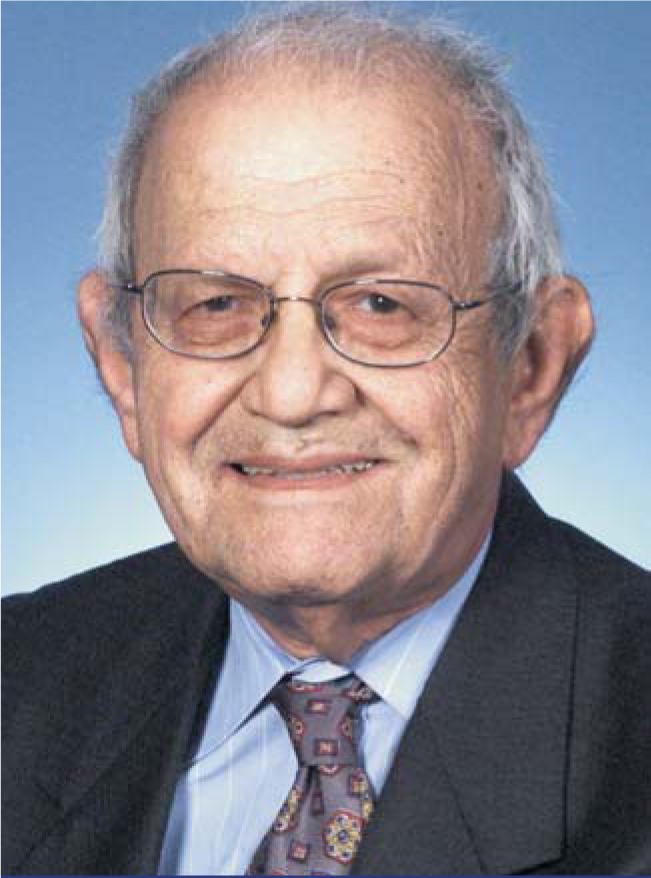Herbert Gursky
DOI: 10.1063/1.2754616
The death of Herbert Gursky on 1 December 2006 from gastric cancer has deprived his family of a husband and father, the scientific community of an esteemed colleague and friend, and the nation of a dedicated public servant.
“Herb,” as his friends called him, was born in the Bronx, New York, on 27 May 1930. After earning a BS in physics from the University of Florida in 1951, he received an MS in physics from Vanderbilt University in 1953. Under George T. Reynolds, he obtained his PhD from Princeton University in 1959 with a thesis on cosmic rays. He then became an instructor in the physics department of Columbia University, where he worked until 1961.
I first met Herb during my stay at Princeton in 1958, where we joined forces to search for a nonexistent particle with 500 electron masses. We worked day and night on the project, which brought us very close. In 1961 Herb joined my small group at American Science and Engineering (AS&E) in Cambridge, Massachusetts, which had begun in 1959 to work in x-ray astronomy with sounding rockets. He immediately became involved with the construction and launch of our second and third rocket payloads, sponsored by the Air Force Cambridge Research Laboratories. It was on the third launch, on 18 June 1962, that we discovered the first x-ray star, Sco X-1. From that moment on, astronomy was never the same, and we were given the privilege of working in a new and exciting field.
The next product of our collaboration was a document we submitted to NASA in September 1963 to seek its support in our program. We decided that our previous proposals had been too timid, and we prepared a five-year plan that included rocket launches and small satellites and culminated in 1968 with the flight of a 1.2-meter x-ray telescope, which was my particular fixation. It is remarkable, though not coincidental, that the development of x-ray astronomy followed our plan, although we had to wait 36 years to see it fully implemented.
Herb’s greatest observational contribution to x-ray astronomy, and the one of which he was most proud, occurred in 1967 when he designed and directed the construction of a novel rocket payload using two of Minoru Oda’s modulation collimators. This collaborative AS&E and MIT experiment determined the position of the x-ray source Sco X-1 with the unprecedented accuracy of five arcseconds, making it possible to identify its optical counterpart, a 13thmagnitude star with a novalike spectrum. This finding suggested that Sco X-1 could be a binary system, but the discovery of radio pulsars by Antony Hewish and Jocelyn Bell in the same year swayed theorists to look at models based on isolated spinning neutron stars. It was understood later that Sco X-1 was a binary system.
Herb participated in the analysis and interpretation of the Uhuru satellite data. He realized that the optical counterparts of x-ray sources need not be as dim as that of Sco X-1 and also immediately appreciated the significance of the discovery of extended emission from clusters of galaxies. He was the principal investigator for an experiment on the first of NASA’s high-energy astronomy observatories, HEAO-1, and for US participation in the Dutch satellite ANS, which discovered the x-ray bursters.
During a one-day session at AS&E, Herb and I also came up with the idea of good geometry detection for x-rays. Later patented by the company, the technique provides the basis for airport scanning machines.
Herb was appointed vice president for research at AS&E in 1967. After joining the Smithsonian Astrophysical Observatory in 1973, he was appointed a professor of the practice of astronomy at Harvard University in 1975 and became associate director of the division of optical and infrared astronomy at the Harvard–Smithsonian Center for Astrophysics in 1976. Herb supervised the completion of the Multiple Mirror Telescope, a joint program of SAO and the University of Arizona, from 1975 to 1981.
He joined the US Naval Research Laboratory (NRL) in 1981 as superintendent of its space science division and chief scientist of the E. O. Hulburt Center for Space Research. For 25 years Herb supervised a staff of more than 50 PhD scientists in the development of numerous programs. Their activities spanned the gamut from solar physics to atmospheric sciences, meteorology, and high-energy astrophysics. The programs culminated in 2006 with the delivery of the NRL instrument for the Gamma-Ray Large Area Space Telescope to study the high-energy universe and with the launch of NRL instruments on the Japanese satellite Solar-B and the NASA satellite STEREO.
In recognition for his work, Herb received NASA’s Exceptional Scientific Achievement Medal in 1978 and the NRL Alan Berman Research Publication Award.
Apart from his brilliant scientific achievements, Herb was a scientist’s scientist. His warm personality, modest approach, integrity, and wisdom were of great value to astronomy and to the nation, and we will certainly miss him.

Herbert Gursky
NAVAL RESEARCH LABORATORY

More about the Authors
Riccardo Giacconi. Johns Hopkins University, Baltimore, Maryland, US .




